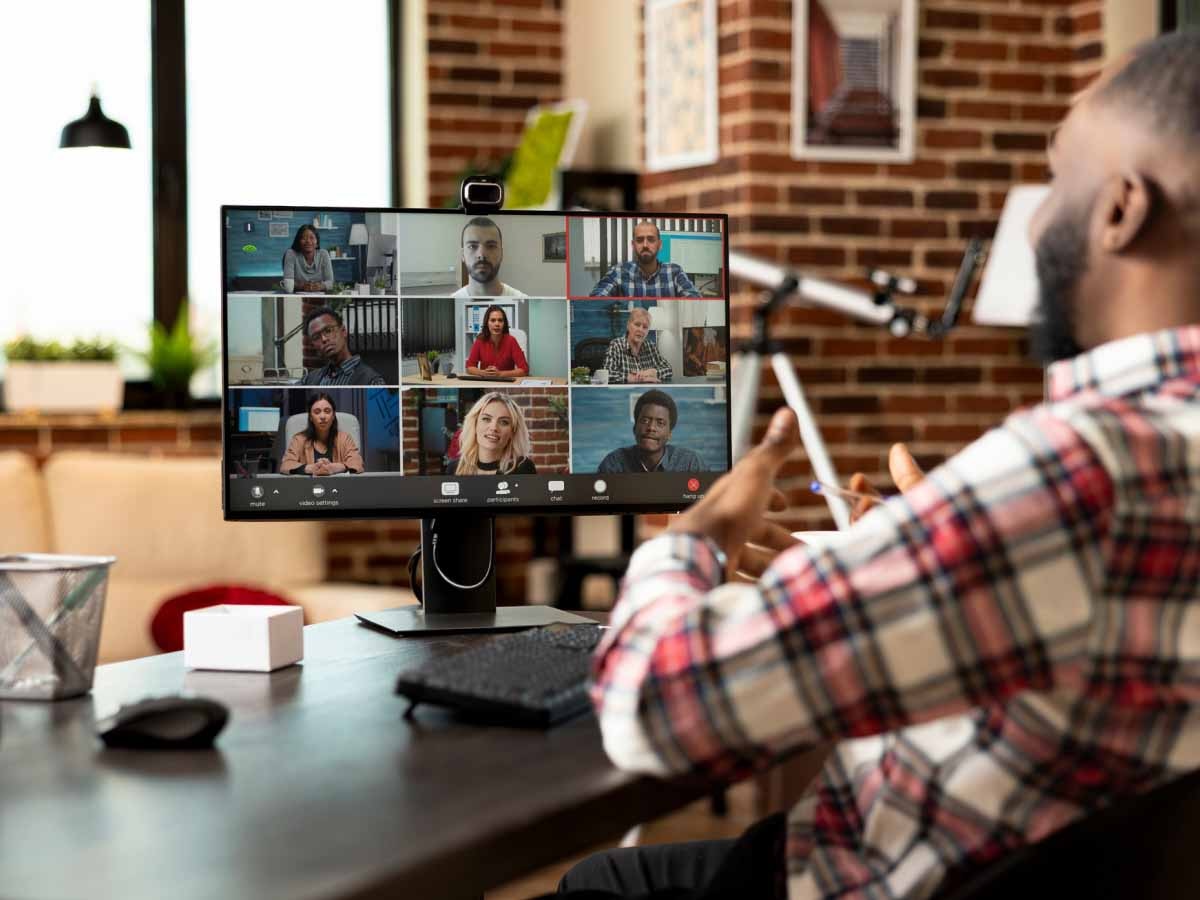Of all the flexible work arrangements made possible by modern technology, hybrid work is by far the most popular. According to Gallup, six in 10 employees with remote-capable jobs want a hybrid work arrangement. That’s nearly double the number who want to be fully remote — and a lot more than the percentage that prefer to work in person.
But managing a hybrid workforce isn’t like managing office employees — or remote teams, for that matter. Let’s look at seven of the most common challenges, along with proven strategies to overcome them.
1. Lack of visibility
For most managers, maintaining visibility is the biggest challenge in a hybrid work environment. Whether team members are fully remote or working from home two days a week, it’s hard to tell if people are working as expected when they’re not on site. You can’t see what apps they use, how many hours they work or if they’re struggling with workloads. Yet it’s still your job to ensure your employees get the support they need.
The solution: Use hybrid workforce management software
The best way to increase visibility? Use hybrid workforce management software. With a platform like ActivTrak, you’ll get many of the same insights you’d gain from walking around the office and more. Daily reports show you how people spend their time, where they’re most productive, which apps they use, who’s overworking and who has time to help. It’s one of the most reliable ways to ensure you’re doing hybrid work right.
2. Blurred work-life balance
It doesn’t matter which hybrid model you use — working remotely is part of the equation. And for many employees, that means more work. People have a tendency to stay logged on 10% longer when they’re not working on-site. They’re also more likely to work nights and weekends. And unfortunately, as lines blur and work bleeds into personal life, your risk of burnout and disengagement skyrockets. Studies show employees who consistently clock over 40 hours a week become so unproductive it’s useless.
The solution: Monitor employee well-being
While you can’t force employees to maintain work-life balance, you can (and should) encourage it. By monitoring employee well-being, you’ll see when someone’s taking on too much, working too long or struggling to draw proper boundaries. Doing so empowers you to step in and help — whether that means encouraging a team member to take more time off or redistributing workloads.
3. Employee engagement measurement
Without daily face-to-face interactions, it’s hard to know if team members are connecting. And while many companies rely on surveys to measure employee engagement, these tools only tell you so much. For starters, you can only send surveys so often before employees start feeling like they’re a chore and providing canned responses. Additionally, some employees may not fill out the survey, which can lead to generalized assumptions that aren’t accurate. On the other hand, experts caution against using survey results at all if your response rates exceed 85% — a number this high means the answers are likely skewed by incentives. Speaking of skewed responses, it’s also important to consider that employees may be reluctant to share their true feelings, even if surveys claim to be anonymous.
The solution: Use software to monitor engagement daily
Employee engagement software is a much more reliable method. These tools collect and analyze daily employee data for you, providing real-time engagement insights into your hybrid workforce in easy-to-understand dashboards. For this reason, many leaders use a platform like ActivTrak to surface early signs of disengagement and quiet quitting — insights even the best survey tools might miss.
4. Outdated security measures
With so many people working from so many locations, and on so many different devices, securing business data has never been harder. Hybrid work arrangements have become a heyday for hackers looking to exploit vulnerabilities — the unsecure WiFi, the unsuspecting employee, the easy-to-steal login credentials. It’s no longer enough to monitor your corporate network and company-owned devices. New guidelines are key.
Solution: Create a security framework for hybrid employees
If you want to protect your hybrid employees — and your proprietary data — building a new security framework is crucial. You need hybrid policies to guide where people can work, how they’re allowed to use company devices and which apps they can access off-site. Luckily, some employee monitoring solutions include features designed for this very purpose.
5. Office space management
Hybrid working arrangements don’t just impact engagement and security. They create ripple effects for your office space, too. When employees split time between remote and in-office work, managing your physical office space becomes complex. While hybrid workers don’t need permanent desks, they need somewhere to sit. But if you hold on to too much square footage, you risk overpaying for space you don’t need — one study found Fortune 500 companies waste millions of dollars on unused office space.
The solution: Use a hot desk system
With a hot desk arrangement, you provide access to unassigned office workspaces on a first-come, first-serve basis. With this system, hybrid employees have desks when they need them and work from home when they don’t. It’s a great way to improve office space utilization while creating a hybrid workplace experience that supports productivity.
6. Fostering a strong workplace culture
Building a strong workplace culture isn’t just important. It’s the difference between a hybrid workforce that thrives and one that lacks innovation. Studies show employees who have consistently positive workplace experiences perform at higher levels, drive more innovation and make their companies more profitable. Plus, it makes work fun. Employees who have friends at work are more likely to recommend their companies. But how do you foster friendships in a hybrid environment?
The solution: Schedule regular team-building events
It’s possible to encourage camaraderie in the hybrid workplace — you just have to be more intentional. Some hybrid teams host online book clubs. Others prefer virtual cooking classes and team-building events. And many companies bring everyone together for in-person all-hands meetings or annual retreats.
7. Communication and collaboration
In a hybrid work environment, it’s common for team members to communicate across a range of locations and time zones. Poor internet connections, inconvenient hours and a lack of non-verbal cues make it difficult, if not impossible, to collaborate as you would in a conference room or coffee shop. Hybrid meetings are even trickier — how do you ensure everyone has a voice when some employees are in person and others join remotely?
The solution: Provide tools and regular meetings
The best way to level the communication playing field is to make it the same for everyone. If some employees have to join your meeting virtually, make sure everyone does. By ensuring everyone communicates on the same platform in the same way, you reduce misunderstandings and increase collaboration. Better yet, record calls to help team members catch up quickly when they can’t attend live.
Streamline hybrid workforce management with ActivTrak
To successfully lead a hybrid team, you have to face challenges head on. While hybrid workforce management is a complex process requiring several strategies, the solutions detailed above are a great place to start. They’ll allow your businesses to stay agile and competitive in the ever-evolving work landscape.
Ready to harness the full potential of your hybrid workforce? ActivTrak provides the insights and tools you need to increase visibility, enhance employee well-being and foster a strong workplace culture. More than 9,500 customers use it to understand how remote, office and hybrid teams work — and how they work best.
Get started today with a free account, then schedule a demo for tips and tricks you can use to become a hybrid management hero at your organization.





